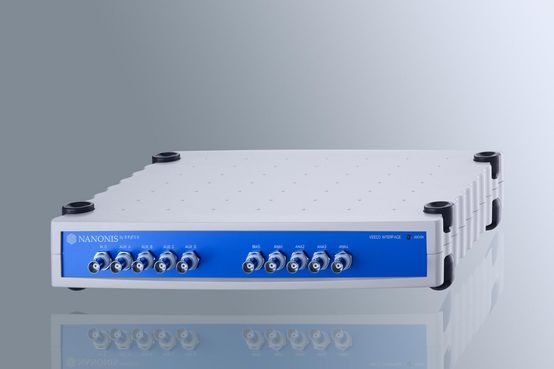 Detail
DetailAdaptation kit Veeco
The Veeco adaptation kit allows the numerous owners of a MultiMode microscope to have access to new and advanced SPM application techniques by simply upgrading the control system. The biggest advantage comes with the Nanonis Oscillation Control Module, which adds the power of a high performance digital PLL to the Veeco MultiMode.
The AKVM4 is an adaptation kit to connect the Nanonis SPM control system to a Veeco MultiMode Atomic Force Microscope. This product offers most advanced and new SPM applications to the numerous owners of a Veeco MultiMode SPM by upgrading just the control system.
The AKVM4 provides the power supplies for the MultiMode head, buffering of signal lines and a redistribution of the lines of the Veeco 37-pin connector to the other components of the Nanonis SPM control system. With the Nanonis Base Package and the Nanonis High Voltage Amplifier it is possible to conduct all kinds of STM and contact-mode AFM measurements: high resolution scanning, sophisticated spectroscopy, force-distance curves and very low noise feedback control. But the main advantage of the AKVM4 comes with the Nanonis Oscillation Control Module. It brings the power of a high performance digital Phase Locked Loop (PLL), tightly integrated into the control system, to the well-known MultiMode. Whether non-contact AFM, tapping mode, constant excitation, constant amplitude or dissipation mode, a vast set of new dynamic modes is now available that has never been exploited before on this microscope.



